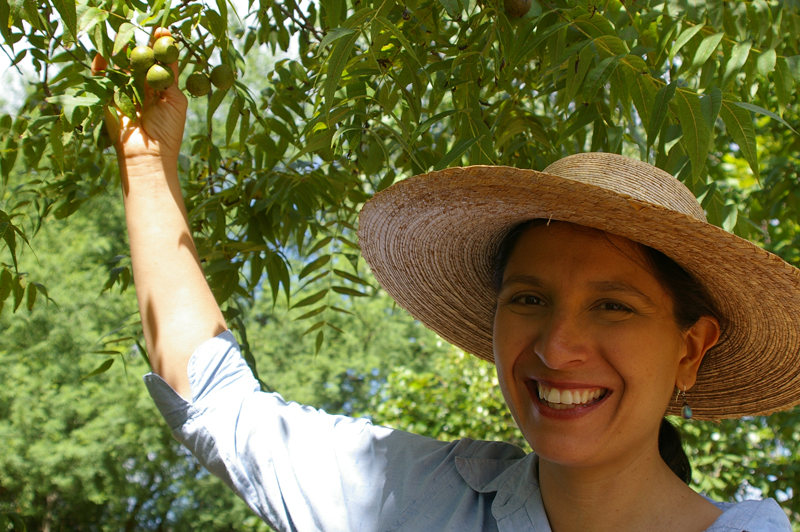Horticultural Spotlight: Celebrating Hispanic Heritage Month

Andrea DeLong-Amaya
New England Botanic Garden at Tower Hill celebrates the diverse backgrounds and experiences of people who have made an impact on the worldwide study and practice of horticulture. During Hispanic Heritage Month, September 15 through October 15, New England Botanic Garden at Tower Hill spotlights present-day and historic changemakers in the plant world who identify as Hispanic.
Today we spotlight Andrea DeLong-Amaya, Director of Horticulture at Lady Bird Johnson Wildflower Center.
Andrea DeLong-Amaya grew up surrounded by nature. Her chemist father would take her fishing and camping throughout rural Michigan, which cultivated her appreciation for the world around her. She moved to Austin, Texas, when she was seven, continuing to be intrigued by the new natural landscape around her.
As she pursued a degree in biology, she found an opportunity working at Barton Springs Nursery. At the time, she did not realize that what began as simply a fun job opportunity would lead to a career in horticulture. The nursery was unique in that many of the plants for sale were native species grown on-site that were not available through other vendors. These plants are acclimated to the local soil, water, and climate. The owner, Conrad Bering, was extremely knowledgeable about the local plants, inspiring Andrea to consider making native plants her life’s work. “He knew so much,” she recalls of Conrad. “His superpower was that he knew the name and details of every plant. Even deciduous trees in winter simply by their form and bark! It was like magic.”
As the Director of Horticulture at Lady Bird Johnson Wildflower Center at the University of Texas, Andrea has been inspiring visitors to understand the native Texas landscape for over 20 years. “Gardening is the slowest of the performing arts,” Andrea describes. “We are here to demonstrate what native plants can do. It is a sensory experience and intellectual, if you want it to be.”
While many folx may think of native Texas plants as only cacti and succulents, at the Wildflower Center, Andrea and her staff have developed stunning horticultural displays to showcase the biodiversity of Texas. For example, by incorporating techniques like espalier and bonsai, visitors see native plants in new perspectives. “Native plants are not overly flowery hybrids,” Andrea explains. “We encourage appreciation of native species for what they are. They are part of our regional identity and our local flavors.”
Andrea is aware that the world is growing disconnected from the natural world. While her father was ingrained in sciences as a chemist, her abuelita didn’t understand why her granddaughter chose to work with her hands. When Andrea’s grandparents relocated from South Texas to Michigan, agricultural work was their option. For Andrea, the privilege she had gained because of her grandparents’ hard work afforded her the opportunity to choose willingly to work with the Earth in a different way. “These assumptions and experiences are how our culture gets removed from nature,” Andrea reflects on her own family’s experience. “We crave nature. I believe there is a deeply human connection with nature even if we don’t realize it. Horticulture is appealing to me because it is both an artistic and scientific endeavor. Nature offers a simply awesome experience in the truest meaning of the word.”
Through her work at the Lady Bird Johnson Wildflower Center, more people understand native plants the way she does, from their critical role in improving habitat, saving water, and addressing pest problems, to creating stunning, unique, distinctly Texas landscapes. Andrea has shared her passion for native plants throughout the horticulture world, including in Fine Gardening magazine, Organic Gardening magazine, Cultivating Place podcast, the Central Texas Gardner program on Austin PBS, and the Wildflower Center’s own Wildflower magazine.
